IndependentlyPoor
Thinks s/he gets paid by the post
I know that this risks putting me on many folk's "ignore user" list, but this forum just hasn't been nerdy enough lately.
So if anybody is interested, here is a correlation matrix of all of Vanguard's mutual funds (at least those that are available through the data server I am using).
Some notes and caveats:
1. Please don't base investment decisions on this without independent confirmation. I don't want a goof of mine to cause anybody to lose money.
2. I used all available data since inception of the funds, but some of them are so new that the data is not worth much. Again: be careful.
3. I hope the color coding is obvious, dark green for strongly anti-correlated, dark red for strongly correlated, and lighter colors for in-between.
4. I created this using Mathematica's financial data server and their built in correlation function.
5. The matrix is very large. You will have to zoom a lot.
View attachment VanguardCorrs.pdf
6. Here are correlations of Vanguard's Total Stock Market ETF to their other ETFs in table format
View attachment vETFs.pdf
So if anybody is interested, here is a correlation matrix of all of Vanguard's mutual funds (at least those that are available through the data server I am using).
Some notes and caveats:
1. Please don't base investment decisions on this without independent confirmation. I don't want a goof of mine to cause anybody to lose money.
2. I used all available data since inception of the funds, but some of them are so new that the data is not worth much. Again: be careful.
3. I hope the color coding is obvious, dark green for strongly anti-correlated, dark red for strongly correlated, and lighter colors for in-between.
4. I created this using Mathematica's financial data server and their built in correlation function.
5. The matrix is very large. You will have to zoom a lot.
View attachment VanguardCorrs.pdf
6. Here are correlations of Vanguard's Total Stock Market ETF to their other ETFs in table format
View attachment vETFs.pdf
Last edited:


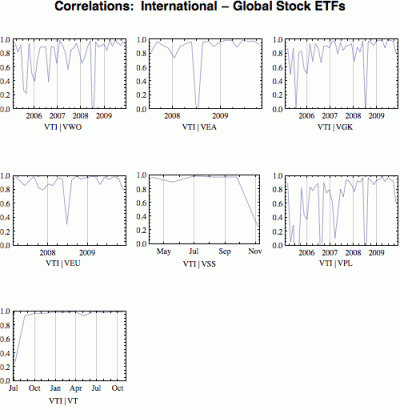
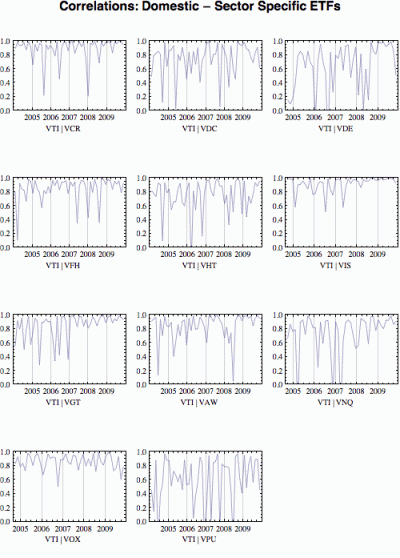
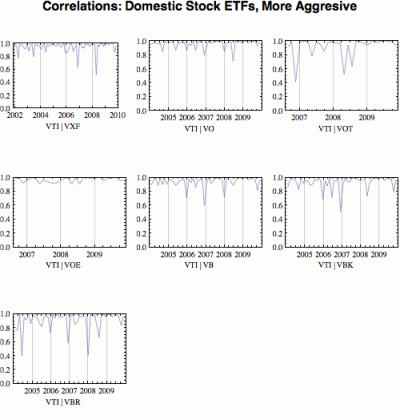
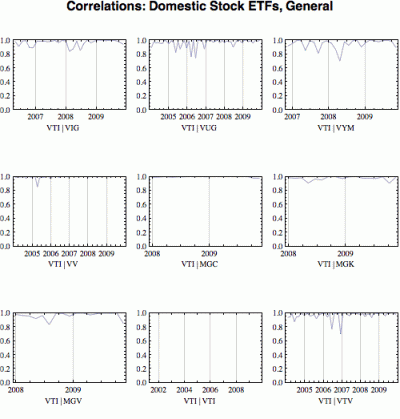
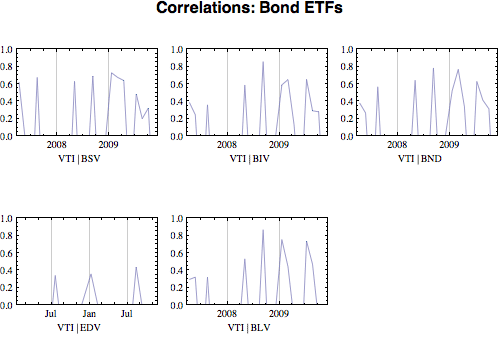

 It was a bona fide Engineer thang.
It was a bona fide Engineer thang.